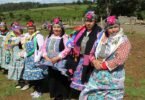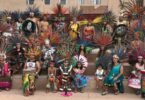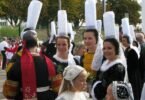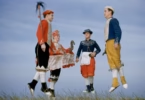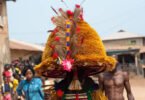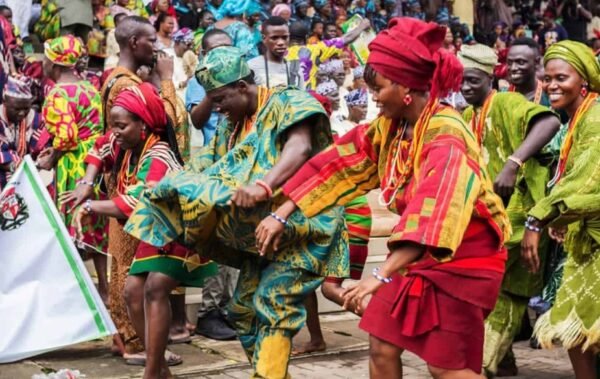
Dance is an important component of Yoruba culture, as it is intertwined with the community’s history, spirituality, and social life. The Yoruba people, who are largely from southwest Nigeria, use a number of dance styles, each with its unique patterns, rhythms, and meanings, to express their rich cultural heritage. Yoruba dance is more than just an art form; it is also a spiritual practice, a mode of communication, and a social rite that reinforces communal bonds.
This article covers the dance patterns of the Yoruba people and their meaning within the culture by showing how movement, music, and meaning come together to define this lively aspect of their heritage.
1. The Role of Dance in Yoruba Culture
- With the Yoruba, dance is more than mere entertainment; it is worship, telling of stories, history, and culture preservation. Dance can be performed on the occasion of religious rites, when festivals are taking place, at life events, or even social functions. It would help further unite the community, pass knowledge of cultural customs to the next generation, and give thanks for beliefs that are spiritual and cultural.
- Spiritual Significance: Dance is generally used as an invocatory form to bring down the deities, spirits, and ancestors. In most of the Yoruba religious activities that involve the Yoruba faith, dance steps are usually coordinated with the beat of the drums and chanties, which eventually lead to a trance-like state, getting the dancer in contact with the divine.
- Cultural Expression: Yoruba dance also serves as a strong means of expressing feelings, social values, and individual identity. Dances are performed to celebrate or commemorate important life events such as birth, marriage, and death; the different movements represent various life stages and experiences associated with those stages.
2. Key Yoruba Dance Forms and Their Patterns
Yoruba dance is highly diversified, with numerous styles danced in many different settings. The dances have specific patterns, movements, and gestures that are all imbued with cultural and spiritual meanings.
Oro Dance:
The Oro dance is among the most important dances in the tradition of the Yoruba people, associated with the honoring of gods and being carried out during religious festivals and sacred rituals. The Oro dances are performed by men in most cases and are always accompanied by drumming, chanting, and the ringing of bells. The steps are very stately and deliberate in showing respect and adoration for the gods.
- Pattern: Slow, rhythmic steps with high knee lifts and controlled steps. Complex foot work is involved; the gestures may be full-body or limited to the hands. It interprets the power and grace of the godhead being worshiped.
Egungun Dance:
The Egungun is another prominent Yoruba dance associated with the honoring of ancestors. During the Egungun festival, masked dancers would incarnate spirits of ancestors by bringing them to life in their movements. It seeks at the celebrations and communications of the dead, asking for blesseds and guidance from beyond.
- Pattern: The dance involves very energetic acrobatic movements; the dancers spin and jump in very complex patterns. The colorful and bright costumes used during the performance reflect the nature of the occasion, which is a celebration, and the movement itself represents the continuality of the presence of ancestors in the lives of the living.
Sango Dance:
Sango, the god of thunder and lightnings, is greatly placed in the pantheon of the Yoruba people. The Sango dance is done in reverence to his person and power during the festivals in his honor. Very energetic, the dance has strong movements with the body, especially the arms and hands, symbolizing the mightiness and forcefulness of Sango.
- Pattern: The dance itself is often filled with fast, staccato movements, and a sequence of arm movements that evoke the flashing of light in lightning. The movements are punctuated by drumming that intensifies the rhythm, reflecting Sango’s power over the forces of nature.
Bata Dance:
Bata dance is closely associated with the rhythm of the Bata drum, which in itself is a spiritual instrument used in the Yoruba culture. The dance is performed at spiritual ceremonies and religious celebrations. The complicated rhythms of the Bata drum control the movement patterns within this dance, whereby harmony between the dancer’s energy and the beat must be achieved.
- Pattern: The drummer in his movements follows the rhythm of the drum, hence creating a fluid interaction between the dancer and the music. Footwork in Bata itself is really intricate, and to the rhythm of the beat, the body sways in perfect harmony with the spirit world.
3. Significance of Movement and Gestures in Yoruba Dance
Every step has a purpose in Yoruba dancing. These dances embody the values of Yoruba philosophy, such as deference for elders, respect for deities, and the celebration of life events, and they are not simply about rhythm. Yoruba beliefs are based on stories and concepts that are symbolised by particular gestures and movements.
- The Use of the Hands: Yoruba dance relies heavily on the hands, which are frequently utilised to interact with the gods, ancestors, and other dancers. Raised hands, for instance, signify prayer or a request for supernatural help, whereas clapping or other hand gestures can convey joy or thankfulness.
- The Body and Posture: The posture of the body in Yoruba dance conveys respect, authority, or humility. Dancers often maintain a dignified stance to show reverence during spiritual performances, while energetic movements may be used to express celebration, joy, or power.
4. Yoruba Dance as Social Commentary
In addition to religious rituals, Yoruba dancing is utilised to tell stories and make social commentary. Yoruba dancers use dance to express ideas about political events, personal experiences, and societal ideals.
- Social Justice and Protest: Dance is being utilised more and more as a social activism tool in modern contexts. Yoruba dancers utilise the rhythms and motions of traditional dances to convey strong messages while highlighting social issues like political upheaval or inequity on stage.
- Storytelling through Movement: Yoruba dance, much like oral traditions, tells stories. Through specific sequences of movements, dancers narrate tales of Yoruba mythology, history, and legends. These performances preserve the cultural stories and pass them down to the younger generations, who learn about their heritage through the art of dance.
5. The Role of Drums and Music in Yoruba Dance
Drums are the heart of Yoruba dance. The intricate rhythms produced by the talking drum, djembe, and bata drums create the foundation for the dancers to synchronize their movements. Yoruba drums are considered sacred, and their sounds are believed to carry the voices of the gods.
- Rhythmic Patterns: Yoruba drummers play intricate rhythms that vary depending on the occasion and the specific dance being performed. These rhythms dictate the pace and flow of the dance, making it a deeply immersive experience where the dancer and drummer work as one.
- Spiritual Connection: The sound of the drum is often said to transcend earthly realms, creating a direct link between the physical and spiritual worlds. This makes drumming and dancing a medium through which the Yoruba can communicate with the divine.
6. The Continuation and Modernization of Yoruba Dance
The most cherished Yoruba cuisines showcase the creativity, resourcefulness, and rich cultural heritage of the Yoruba people. From the smoky delight of party jollof rice to the comforting embrace of pounded yam and egusi soup, these dishes embody a vibrant tradition that flourishes in both traditional and contemporary settings. Yoruba cuisine transcends mere nourishment; it is a celebration of life, love, and community. Enjoying these meals allows one to experience the warmth and depth of Yoruba culture, a legacy that has endured through the ages.
- Integration with Contemporary Dance: Young Yoruba dancers are increasingly incorporating elements of hip-hop, ballet, and other global dance forms into traditional Yoruba movements. This evolution helps to maintain the relevance of Yoruba dance in an increasingly globalized world.
- Global Influence: The global popularity of African dance has led to a resurgence of interest in traditional Yoruba dance. Through performances and workshops around the world, Yoruba dance is being celebrated as a vital cultural treasure, helping to preserve it for future generations.
Conclusion
The spirituality, history, and cultural pride of the Yoruba people are all expressed via dance. Every gesture and pattern has profound meaning, narrating tales of ancestors, gods, and Yoruba daily life. Each dance style has a significant function in Yoruba society, bringing people together to celebrate and honour their cultural history, from the revered Oro and Egungun dances to the exuberant Bata and Sango performances.
Yoruba dance is still developing today, fusing traditional dances with modern forms. Its cultural relevance, however, has not altered; it continues to serve as a reminder of the Yoruba people’s rich past and the ability of dance to preserve tradition, express identity, and build community.

